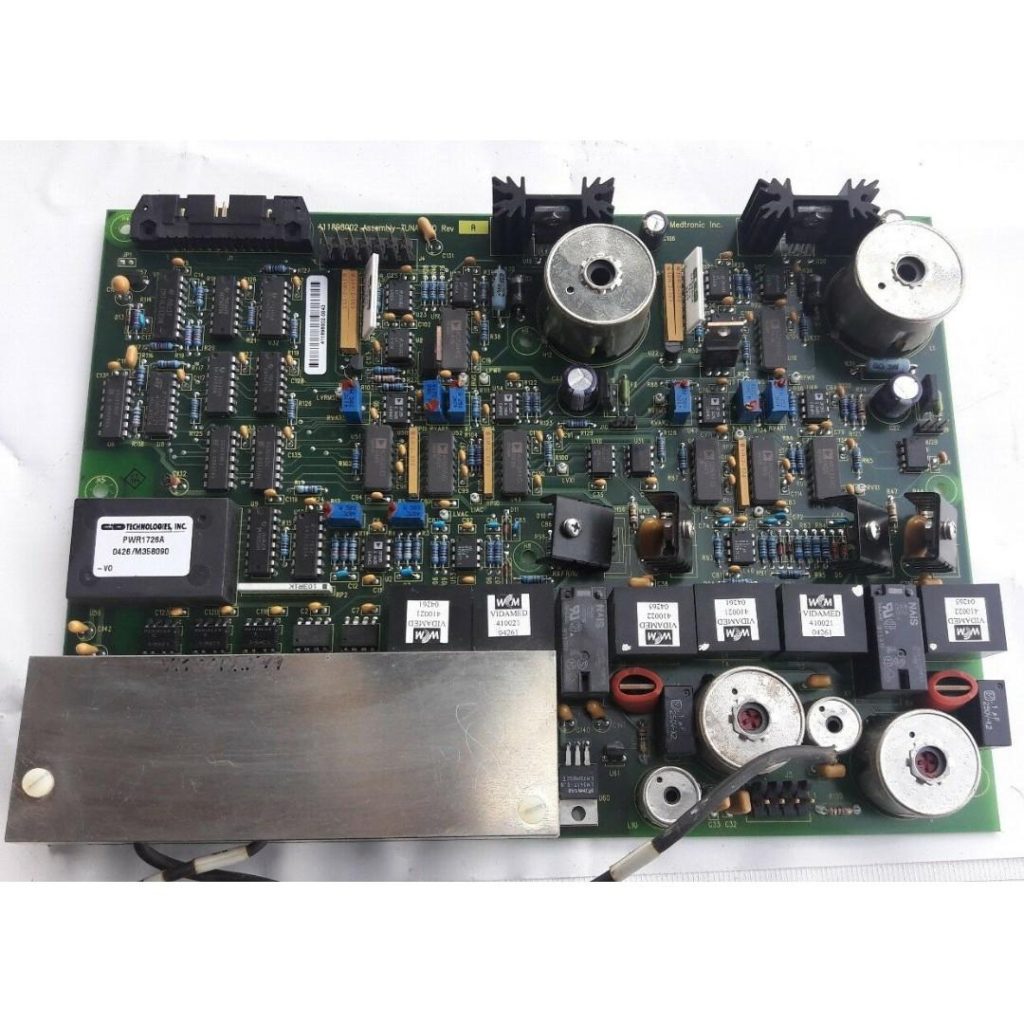Maintain Fresenius Hemodialysis Machine Mainboard is a complete process and we have to repair it without schematic diagram and sometimes the root cause of the failure is not coming from the circuit board itself;

A Fresenius hemodialysis machine reports Rinse failure F03 when the heat sterilization counts down to about 26 minutes. Press the Rinse key to skip one or two minutes and then report Rinse failure F03 again. According to the machine motor board maintenance manual analysis: In the heat disinfection program, the disinfectant solution passes before the 84 valve enters the machine, before and after suctioning the disinfectant, the machine will detect the conductivity of the disinfectant at both ends of the 84 valve through the electrodes on both ends of the 84 valve to determine whether the 84 valve is closed. If the 84 valve is not closed, then The corresponding error codes are F01 and F30.
According to this preliminary judgment, the 84 valve cannot be closed or leaked, but the fault is still after swapping the 84 valve with the adjacent machine, indicating that the fault is not the 84 valve.
At this time, carefully analyze the circuit diagram again which has been acquired by PCB reverse engineering and found that even if two electrodes are faulty, the fault phenomenon should be detected without the disinfectant.
Because there is no possibility of a short circuit between the two electrodes with an 84 valve, check the electrode connection line and there is no short circuit, the fault can only occur at the 84 valve. This analog board troubleshooting idea has obviously gone.
It can only be checked whether the circuit board failure caused a logic error in the detection signal? So began to find the line, because the board is a multi-layer board, you need to be patient and always mark the line.
The inspection result is shown in Figure 1: The two wires of the electrode pass through the LP747 PCB board and are connected to the motherboard through the data cable, and finally enter the LP633 circuit board through the motherboard slot.
One of them is grounded, and the other is connected to pin 10 of an IC41 (LM1830N).
After consulting the original manufacturer information, we found that this IC is called Fluid detector. The principle is to compare the fluid resistance measured through pin 10 with the reference resistance, and then output a logic signal from pin 12. Because there are similar machines, the whole Fresenius Hemodialysis Machine Mainboard is replaced, but the fault still exists.
All possible causes have been found and eliminated, but the fault remains.
By measuring pin 10 of the IC, it was found that this voltage was always low, and it was no longer possible to repair it.
In an accidental situation, I found that as long as the machine clamped the pipe between the front electrode of the 84 valve and the interface of the disinfectant into the machine when testing the resistance of the two ends of the electrode before and after sucking the disinfectant, it would not alarm. The interface of the disinfectant solution on the metal is metal, combined with the two points of grounding of the rear electrode of the 84 valve obtained in the previous inspection, the analysis must be due to the short circuit between this interface and the casing, so that the disinfectant measured by the machine and the resistance is the resistance on this section of pipeline.
This reasonably explains why all the possible causes have been exclude that the machine still alarms. After replacing a plastic interface, the fault was successfully ruled out (Note: This machine is from 1997. The subsequent machines have been improved and replaced with plastic connectors). Although the fault was not caused by a circuit board failure, through this repair, it will be much easier to repair it if there is a similar failure in the future and it is caused by the LP633 circuit board.






